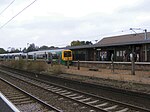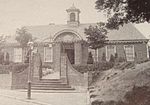Northfield, Birmingham

Northfield is a residential area in outer south Birmingham, England, and near the boundary with Worcestershire. It is also a council constituency, managed by its own district committee. The constituency includes the wards of Kings Norton, Longbridge, Weoley Castle and the smaller ward of Northfield that includes West Heath and Turves Green. Mentioned in the Domesday Book and formerly a small village, then included in north Worcestershire, Northfield became part of Birmingham in 1911 after it had been rapidly expanded and developed in the period prior to World War I. The northern reaches of Northfield fall within the Bournville model village and the southern housing estates were originally built by Austin Motors for their workforce. A centre of the Midlands nail making industry during the 19th century and home to both the Kalamazoo paper factory and the Austin motor company's Longbridge factory in the 20th century, today Northfield is predominantly a residential and dormitory suburb of metropolitan Birmingham. Northfield stands on either side of the main A38, heading south from the centre of Birmingham to Bromsgrove and onwards all the way to Cornwall.
Excerpt from the Wikipedia article Northfield, Birmingham (License: CC BY-SA 3.0, Authors, Images).Northfield, Birmingham
Middlemore Road, Birmingham West Heath
Geographical coordinates (GPS) Address Nearby Places Show on map
Geographical coordinates (GPS)
| Latitude | Longitude |
|---|---|
| N 52.408 ° | E -1.963 ° |
Address
Middlemore Road 22,20
B31 3UD Birmingham, West Heath
England, United Kingdom
Open on Google Maps








